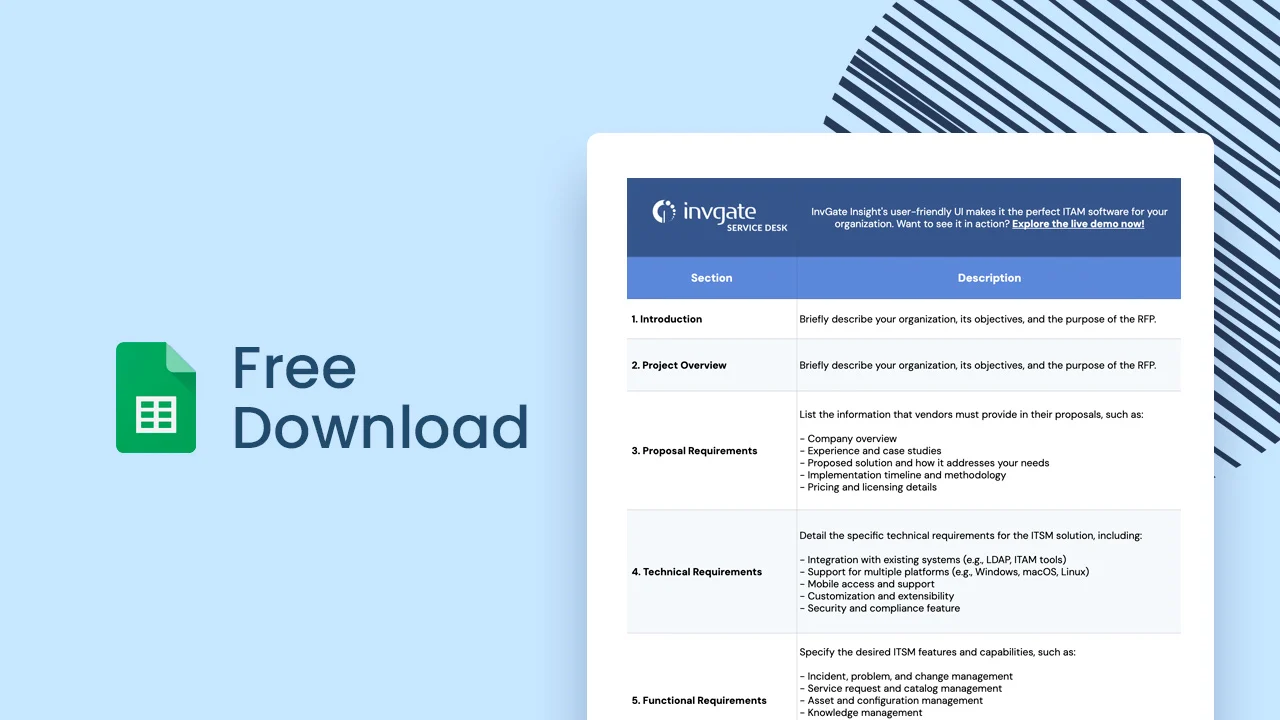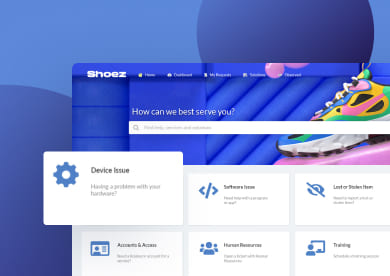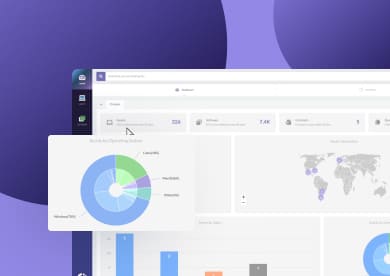Conversations around agility in tech aren’t new, but they often stay tied to software development. When those principles extend to IT Service Management, things get more complex. If you've ever tried to apply agile concepts in a support or operations context, you probably realized the fit isn't always natural.
Still, Agile ITSM has become an increasingly relevant approach for organizations that want faster delivery, better feedback loops, and fewer bottlenecks in service delivery. Getting it right requires more than adapting Scrum ceremonies to a help desk. It calls for a different mindset and adjustments to how services are planned, delivered, and improved.
Let’s break down what agile ITSM is, where agile and ITSM meet, what changes, and how teams can apply it in practice.
What is Agile ITSM?
Agile ITSM combines agile methods with IT Service Management practices. It's not a framework on its own. Instead, it's an approach that uses agile values and principles to improve how IT services are delivered and maintained.
Service Management relies heavily on structured processes, often guided by ITSM frameworks like ITIL. Those processes help bring consistency, but can feel rigid when teams need to react to changing requirements or user expectations. That’s where agile comes in. It introduces iterative improvement, collaborative planning, and a stronger focus on delivering value early and often.
Agile in Service Management doesn’t mean abandoning ITSM practices. It means adapting them to be more flexible, collaborative, and user-focused.
Why apply agile principles to Service Management
IT Service Management teams are under growing pressure to deliver faster, reduce downtime, and meet user needs in more adaptive ways. Traditional models, while structured, can slow things down when every change has to go through a long approval chain or when processes are optimized for control rather than responsiveness.
Agile and ITSM can work together to help teams:
- Respond to incidents and requests more quickly.
- Reduce silos between operations and development.
- Deliver changes incrementally instead of waiting for long release cycles.
- Create shorter feedback loops between users and service teams.
One reason Agile IT Service Management has gained traction is that it's practical. Teams can adapt their existing ITSM processes to be more iterative without needing to scrap everything and start over.
Let’s take Change Management as an example. Instead of waiting for weekly CAB meetings, teams can build lightweight risk models to assess changes continuously, moving low-risk ones forward faster.

Principles of Agile Service Management
Applying agile in Service Management means working in smaller increments, iterating regularly, and focusing on collaboration. It doesn't mean every team has to run full Scrum cycles or hold daily standups.
Here are some principles that guide agile Service Management:
1. Value-focused work
Service tasks should align with business goals and user needs. Prioritization should reflect what provides the most value, not just what’s next in a queue.
2. Iterative improvement
Processes are never "finished." They can always be tested, adapted, or simplified. Teams look at service performance regularly and adjust based on real-world use.
3. Collaboration over silos
Agile ITSM encourages cross-functional teams to work together — developers, service desk agents, and operations staff — so that feedback and improvements don’t stay isolated.
4. Feedback loops
Gather input from users early and often, whether through support tickets, user satisfaction surveys, or retrospective sessions. Use that data to adjust.
5. Minimum viable processes
Instead of designing overly detailed processes upfront, start with a lightweight version. Let the team grow it as needed based on experience.
6. Just-enough documentation
Documentation remains important, but it doesn’t have to be exhaustive. Focus on clarity and usefulness rather than length.
These principles help reframe ITSM as something that evolves continuously with input from everyone involved.
Benefits of agile ITSM
Adopting agile methods in Service Management doesn’t solve every issue, but it can lead to more responsive, adaptable IT teams. Here are some of the key outcomes organizations report:
- Faster delivery of improvements: Teams can roll out changes incrementally, rather than waiting for large releases. That reduces risk and helps users see progress sooner.
- Better incident resolution: Collaboration between teams, faster handoffs, and real-time communication tools can improve time to resolution. For example, swarming — where multiple team members work on an incident together — is a common agile practice that speeds up response.
- Greater adaptability: Instead of following fixed annual plans, agile service teams can adjust to evolving needs. Regular retrospectives help them course-correct often.
- Higher team engagement: Agile working models give team members more autonomy and input. That leads to stronger ownership of tasks and processes.
- Continuous improvement: Because teams are encouraged to inspect and adapt, process improvements happen regularly. Metrics aren’t just reviewed quarterly — they guide everyday decisions.

How to implement agile in Service Management
There’s no universal formula for adopting Agile ITSM. It’s mostly about introducing iterative thinking, tighter feedback loops, and team autonomy where it makes operational and business sense. You can implement agile in phases, starting with well-scoped changes in high-impact areas.
1. Start with a specific process
Start by identifying a single ITSM process that will benefit from shorter cycles and faster feedback. Change enablement is a frequent starting point, but request fulfillment or incident management can also offer quick wins.
Example: Replace static weekly CAB meetings with a tiered risk model that categorizes changes by impact. Automate pre-approved standard changes and establish expedited workflows for low-risk changes, using policy-based approvals within your ITSM platform.
2. Define goals and operational metrics
Set measurable goals tied to service quality and team performance. Define success criteria in advance to avoid ambiguity during implementation.
Some useful metrics include:
- Mean Time to Acknowledge (MTTA) and Mean Time to Resolve (MTTR).
- % of changes deployed without incident.
- User satisfaction (CSAT or NPS).
- First contact resolution rate.
- Sprint throughput (for teams using Scrum or Kanban).
Benchmark current values, then review them in retrospectives to assess whether the agile adjustments are producing better outcomes.
3. Introduce feedback mechanisms into workflows
Agile in service management requires structured feedback, not just ad hoc input. That includes both internal and external sources.
For service teams: Run post-incident or post-implementation reviews to identify what slowed down response, caused confusion, or required escalation. Use those reviews to revise processes or documentation.
For users: Embed feedback collection into request resolution or self-service portals. Tie recurring negative feedback to process owners who can refine those touchpoints based on input.
4. Form cross-functional teams or working groups
Where possible, bring support agents, developers, release managers, and SREs into shared channels or standups. These can be temporary squads for major problems or permanent service teams for high-demand applications.
Example: In Problem Management, a cross-functional team can collaborate on root cause analysis and implement preventive measures more quickly than handoffs between silos.
Cross-team coordination also supports shared accountability, reducing backlogs caused by unclear ownership or low responsiveness across teams.
5. Adapt your ITSM tooling to support iterative work
The tools used for ITSM must be flexible enough to support frequent process updates and data-driven decisions. Review the following capabilities:
-
Customizable workflows without deep admin overhead.
-
Integrated risk scoring for Change Management.
-
Configurable dashboards that track backlog, ticket aging, team load, and service levels.
-
Automation rules for approvals, escalations, and task assignment.
-
Native or API-based integrations with development tools.
These adjustments enable teams to apply agile practices without breaking alignment with governance or compliance requirements.
6. Provide training on agile methods in an ITSM context
Agile frameworks often reference product teams, sprints, and backlogs — concepts that may feel abstract to service operations. Train teams on how agile concepts map to real ITSM scenarios.
For example:
-
A backlog might refer to unresolved requests or known errors.
-
A sprint could mean scheduled weekly process reviews or grouped tasks for implementation.
-
User stories might take the form of ITSM use cases (e.g., “As a service agent, I need a faster approval path for low-risk changes”).
7. Simplify documentation, but maintain traceability
Documentation should support agility, not restrict it. Still, traceability remains necessary — especially in regulated environments.
-
Replace static SOPs with living documentation that is updated through version control.
-
Use service portals or wikis to document process states in a way that’s easy to search and update.
-
Embed documentation reviews into retrospectives or post-incident reviews.
This helps teams avoid outdated documentation while retaining compliance and knowledge sharing across iterations.
Conclusion
Agile ITSM helps service teams deliver value more efficiently, without losing the structure that ITSM provides. It’s not about applying agile rituals blindly, but about rethinking how teams work, communicate, and improve.
By gradually applying agile principles, organizations can reduce delays, increase collaboration, and create better service experiences. The change doesn’t happen overnight, and it won’t look the same for every team. But with a clear plan and focus on progress over perfection, Agile Service Management can become a practical reality.
If you’re considering this approach, start small. Focus on real use cases, involve your team early, and revisit your processes regularly. That’s where the real value of agile in Service Management starts to take shape.















